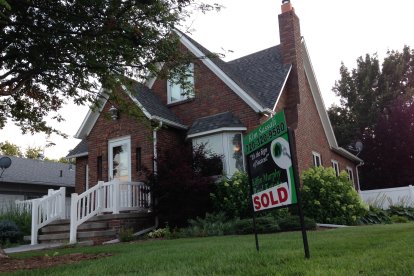California: housing crisis is "the main driver of rising inequality"
Regulations limiting construction along with other factors have slowed national economic growth. "The nation's labor productivity would be 12.4% higher if states reduced their levels of housing regulation."

Mercado de la vivienda / Tkoch (Pixabay).
"Solving California's housing crisis will require addressing the root of the problem: land values have risen to a point that precludes production for all but the wealthiest middle-income households," notes a study by Wendell Cox.
"Unaffordable housing is the main driver of rising inequality." In other words, when it is more difficult to acquire a home because of its high cost, inequality increases, because fewer households can afford the higher prices.
The nation's labor productivity would be 12.4% higher if states reduced their levels of housing regulation. Measures limiting freedom of construction along with other factors have slowed national economic growth. A change in these policies could generate "significant growth effects."
Land use regulation
The problem of unaffordable housing in the Golden State began around 1970. Dartmouth economist W. Fischel noted that California "became the leader in growth control," a strategy that limits new housing creation by imposing building moratoriums, annual fees, and limits on the conversion of vacant land to housing. In addition, it imposed a much stricter environmental review for private housing projects than elsewhere.
Prior to the implementation of this measure, developers were able to purchase land in affordable municipal environments. Growth management began as a municipal issue, but expanded to cover entire counties and real estate markets. And the balance between supply and demand was further altered by the severe restriction of land for residential development, at the same time, that demand was increasing. This led to higher prices.
Urban containment and migration
Urban containment may be the "critical mass" that explains much of the housing affordability crisis in markets including California, notes Shlomo Angel, Director of Urban Expansion at New York University's Marrron Institute.
"Land use regulation involves drawing a line around an urban area." These are policies that are designed to limiting urban development outside of a defined area, which encourages infill development and redevelopment within the area, not allowing for the residential expansion. According to urban planners Arthur C. Nelson and Casey J. Dawkins, urban containment is designed to increase land costs.
The Economist said, "Slums rarely stop growing on their own. It turns out that the only reliable way to stop them is to stop them by force. But the consequences of doing that are dire."
Inefficient solutions: urban planning
"Urban planning slows sprawl. Popularly called Urban Sprawl. This leads to the adoption of urban containment as a main solution. Unfortunately, urban containment is strongly associated with severely unaffordable housing and its consequences."
The deterioration in housing affordability is often attributed to increased demand, especially from international interests, large investors and investments or "speculation."
Demand leads to higher prices only if there is not enough supply, making it difficult to build affordable housing for middle-income households: "Housing affordability may get even worse as demand continues to increase, without sufficient improvement in supply."
RECOMMENDATION





















